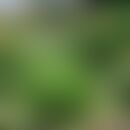Synonym(s)
DefinitionThis section has been translated automatically.
Helichrysi flos, flowers of the sand immortelle, is a drug collected and dried from the flowers of the plant shortly before flowering, which is used in herbal medicinal products for the treatment of dyspeptic complaints.
Extract from the flowers of the yellow cat's paw, Helichrysum arenarium (Gnaphalium arenarium), see under sand immortelle, a plant from the Asteraceae family (composite plants) that grows up to 30 cm tall and is native to Europe and Central Asia.
Helichrysum arenarium (sand immortelle) is the parent plant of Flores stoecchados (citrinae), the official yellow cat's paw (flowers) according to Ph.Helv.7 and EB6.
Quality Drug Codex (DAC) and in the European Pharmacopoeia (Ph. Eur.).
HMPC monograph: Traditional-use: internally for mild digestive complaints, bloating, flatulence
ESCOP monograph: digestive complaints;
Commission E monograph: dyspeptic complaints.
Empirical medicine: catarrh; diarrhea, also in dysentery, for gall bladder complaints, as a diuretic. External: inflammatory wounds. Today almost exclusively an ornamental plant.
IngredientsThis section has been translated automatically.
Helichrysi flos contains flavonoids (according to DAC at least 0.6% calculated as hyperoside), phenolic carboxylic acid, phytosterols, yellow-coloured alpha-pyrano derivatives (arenol, homoaeranol).
You might also be interested in
EffectsThis section has been translated automatically.
Helichrysi flos has a weakly choleretic and spasmolytic effect.
Field of application/useThis section has been translated automatically.
Helichrysi flos is used in the treatment of dyspeptic complaints(Commission E). The drug is crushed and prepared as an infusion.
DosageThis section has been translated automatically.
The average daily dose of the drug is 3.0 g.
Tea infusion: 1.5 g finely chopped dysentery flowers/cat's paw flowers with about 150 mL of boiling water, strain after 5 to 10 min.
Drink 1 cup 1 to 3 times a day 15 to 30 minutes before a meal or when symptoms occur.
Due to its rather weak effect, it should only be taken in combination with other choleretic substances such as artichoke leaves or turmeric,
Undesirable effectsThis section has been translated automatically.
Allergic reactions (daisy!)
ContraindicationThis section has been translated automatically.
It should not be taken in case of an existing gallstone disease, in case of other gallstone diseases only after consultation with a doctor.
Allergy to daisies, lactation and pregnancy, as well as children and adolescents under 18 years of age in the absence of data.
InteractionsThis section has been translated automatically.
There are no known interactions with other drugs.
LiteratureThis section has been translated automatically.
- Legoalea PB et al. (2013) Anti-inflammatory and antioxidant flavonoids from Helichrysum kraussii and H. odoratissimum flowers. Nat Prod Commun 8:1403-1404.
- Morikawa T et al. (2009) Medicinal flowers. XXX. Eight new glycosides, everlastosides F-M, from the flowers of Helichrysum arenarium. Chem Pharm Bull (Tokyo)57:853-859.
- Morikawa T et al. (2009) Medicinal flowers. XXVII. New flavanone and chalcone glycosides, arenariumosides I, II, III, and IV, and tumor necrosis factor-alpha inhibitors from everlasting, flowers of Helichrysum arenarium. Chem Pharm Bull (Tokyo) 57:361-367.
- Schilcher H (2016) In: Leitfaden Phytotherapie, Urban & Fischer Verlag Munich, p. 280.
- Skvortsova VV et al. (2015) Antituberculous in vitro activity of Helichrýsum arenárium extract. Eksp Klin Farmakol 78:30-33.
- https://arzneipflanzenlexikon.info/ruhrkraut.php
- https://www.ema.europa.eu/en/documents/herbal-monograph/final-european-union-herbal-monograph-helichrysum-arenarium-l-moench-flos_en.pdf
- https://heilkraeuter.de/lexikon/wald-ruhrkraut.htm
- Blaschek W (2015) Wichtl tea drugs and phytopharmaceuticals. A handbook for practitioners. Wissenschaftliche Verlagsgesellschaft Munich. S 322-324
- Burger A et al (1993) Hunnius Pharmaceutical Dictionary 7th edition Walter de Gruyter Berlin-New York p. 664
- Blaschek W (2015) Wichtl-Teedrogens and phytopharmaceuticals. A handbook for practice. Wissenschaftliche Verlagsgesellschaft Munich. S 322-324




